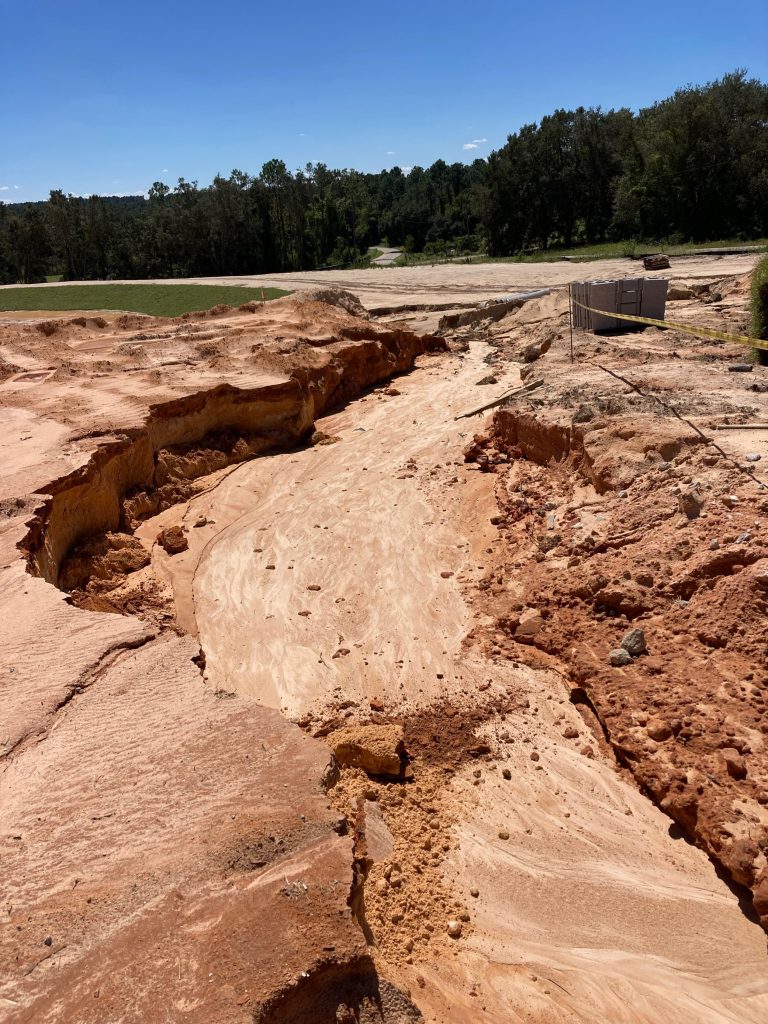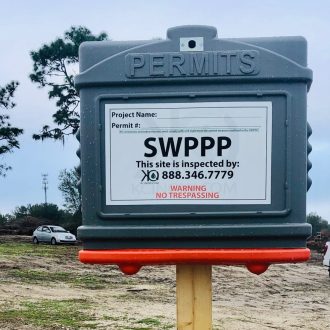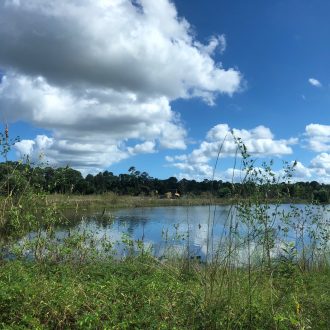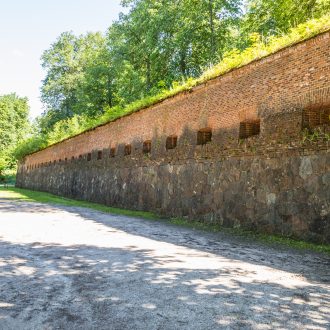

Many rain events can begin with general surface runoff that may begin as sheet flow and then the water can accelerate and scour the soil into channels. Once this occurs, the stormwater can become a vicious velocity of flooding water. Soil exposed by construction activities is especially vulnerable to erosion.
Stormwater runoff can pick up debris and many types of pollutants. Sediment, oil and grease, certain contaminants used on construction sites like paint and stucco, and other toxics can easily be carried by uncontained stormwater. These pollutants from stormwater runoff can be detrimental to aquatic life and human health.
Erosion can be categorized into two types, channel and overland erosion. Channel erosion, can basically be defined as any heavy erosion of banks and beds of streams. Channel erosion can dramatically disrupt and influence stream habitat and natural flow systems. Overland erosion is considered a primary source of sediment disruption during construction activities. Sediment can deliver unwanted nutrients and pollutants that may degrade water resources and harm aquatic wildlife. There are four types of erosion processes.

1. Raindrop erosion or splash erosion detaches soil that can become susceptible to sheet erosion.
2. Sheet erosion is caused by shallow sheets of water flowing off the land. Therefore, sheet flow erosion can convey soil particles that are being detached by raindrop erosion.
3. Rill erosion will take place once the volume and velocity increase within low spots of land.
4. Gully erosion occurs once rills intersect and become larger channels of stormwater. Rill and Gully’s are basically defined by the dramatic difference in size. Once a channel becomes large enough to create a bank or streambed, it will be considered a gully.
Erosion and sedimentation prevention Best Management Practices (BMPs) can be the simplest and most effective measures you can take to maintain and comply with stormwater discharge requirements on your site. Call KCI, we can help. 888.346.7779.



